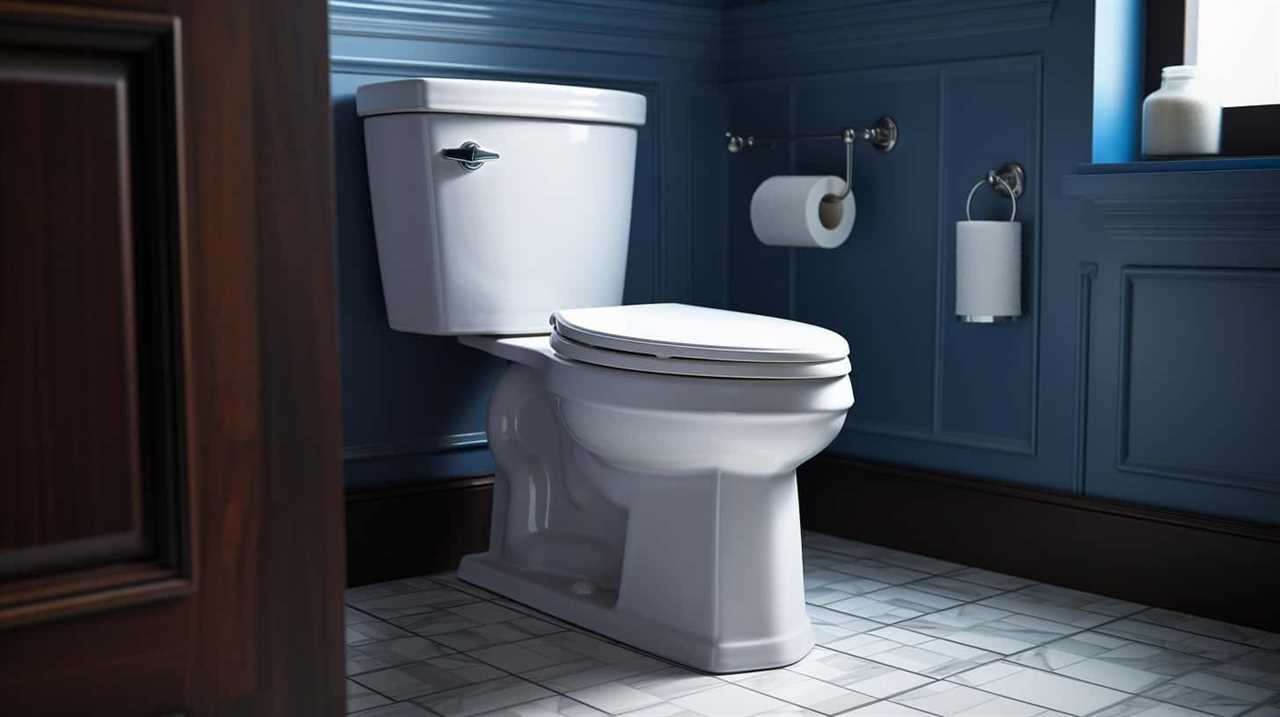Have you ever wondered if it’s acceptable to flush leftover food down the toilet? Well, we’ve got the answers you’re looking for.
In this article, we’ll delve into the environmental impact, plumbing and septic system issues, and health and safety concerns associated with this common practice.
We’ll also explore alternative methods of food disposal.
So buckle up and get ready to dive deep into the world of toilet food disposal!

Key Takeaways
- Flushing leftover food disrupts waste management systems and can lead to pipe blockages and water contamination.
- Flushing food waste negatively affects plumbing and septic system maintenance, causing clogs and reducing capacity.
- Flushed food waste can contain harmful bacteria, leading to foodborne illnesses and further water contamination.
- Alternative methods such as composting, waste management, and food donation prioritize sustainability, minimize environmental impact, and contribute to social welfare.
Environmental Impact
The environmental impact of flushing leftover food down the toilet can be significant. When we discard food waste in this manner, it not only affects waste management systems but also contributes to water pollution.
Waste management systems are designed to handle specific types of waste, and flushing food down the toilet disrupts this process. Food waste can clog pipes, leading to blockages and costly repairs.
Additionally, when food waste enters waterways, it can contaminate the water and harm aquatic life. As the food decomposes, it consumes oxygen in the water, leading to oxygen depletion and the death of fish and other organisms.
Therefore, it’s important to properly dispose of leftover food through composting or placing it in the appropriate waste bin to minimize the environmental impact.
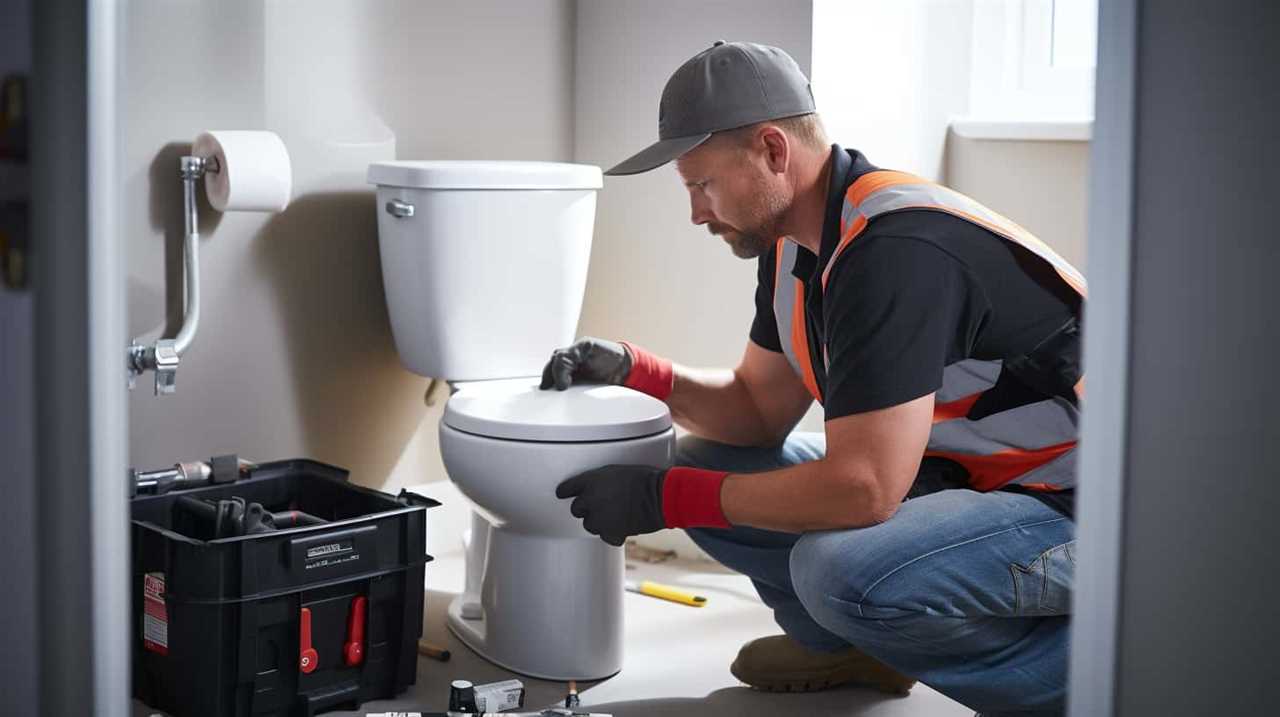
Plumbing and Septic System Issues
When considering the issue of plumbing and septic system issues, we must address the potential complications that can arise from flushing leftover food down the toilet.
Flushing food scraps down the toilet can lead to toilet clogs and blockages in the plumbing system. The food particles can accumulate and create a buildup, eventually causing a blockage that hinders the flow of water. This can result in overflowing toilets and costly repairs.
Additionally, flushing food waste can also have a negative impact on septic tank maintenance. The solid food particles can settle in the septic tank, leading to reduced capacity and potential drain field issues. Regular pumping and maintenance of the septic tank are necessary to prevent these problems.
To summarize, here are the potential plumbing and septic system issues that can arise from flushing leftover food down the toilet:
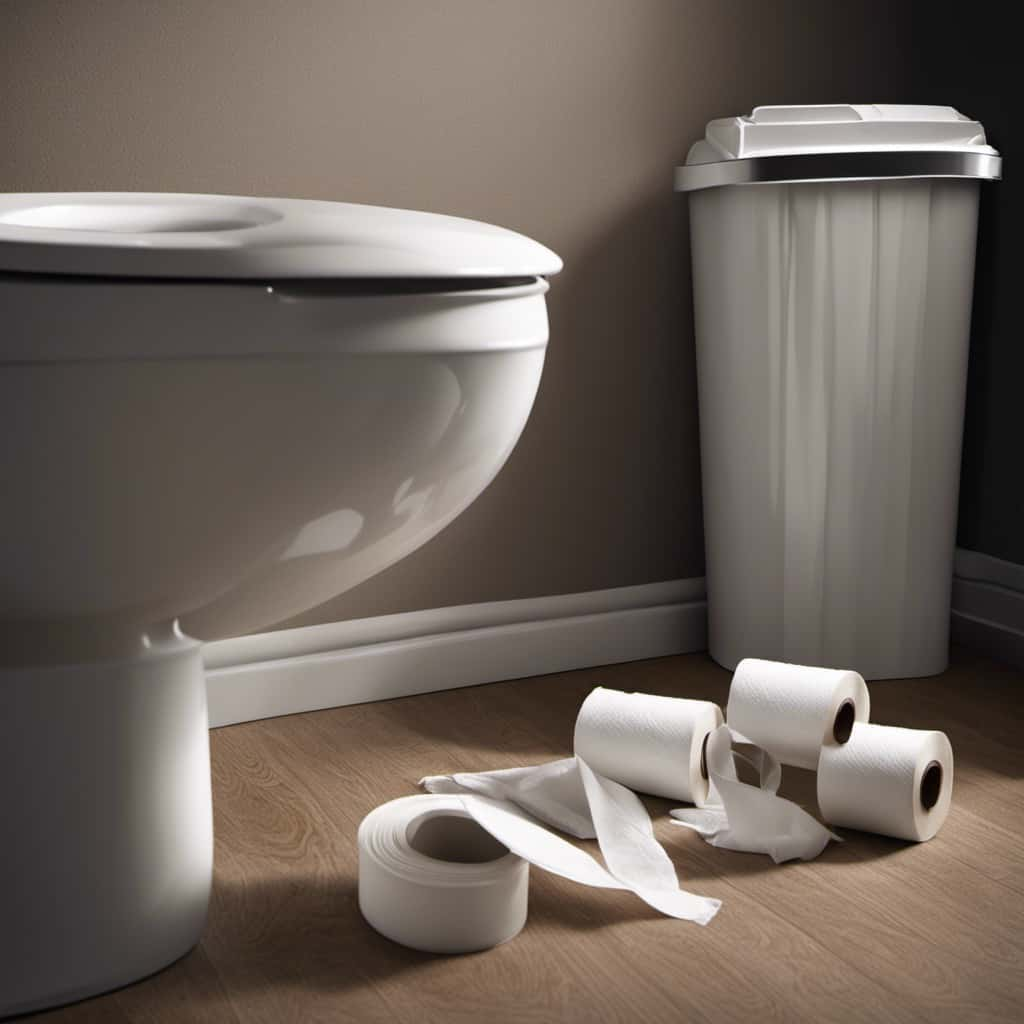
- Toilet clogs and blockages
- Costly repairs and overflowing toilets
- Negative impact on septic tank maintenance and potential drain field issues.
Health and Safety Concerns
Now let’s delve into the health and safety concerns associated with flushing leftover food down the toilet, as it poses potential risks to both individuals and the environment.
One major concern is the potential for foodborne illnesses. Leftover food can contain harmful bacteria such as salmonella or E. coli, which can cause food poisoning if ingested. When flushed down the toilet, these bacteria can contaminate the water supply and pose a risk to public health.
Additionally, flushing food down the toilet can lead to water contamination. The excess food can clog pipes and cause sewage backups, potentially leading to leaks and spills that can contaminate nearby water sources.
It’s important to dispose of leftover food properly, such as through composting or using designated waste disposal systems, to ensure the safety of both individuals and the environment.
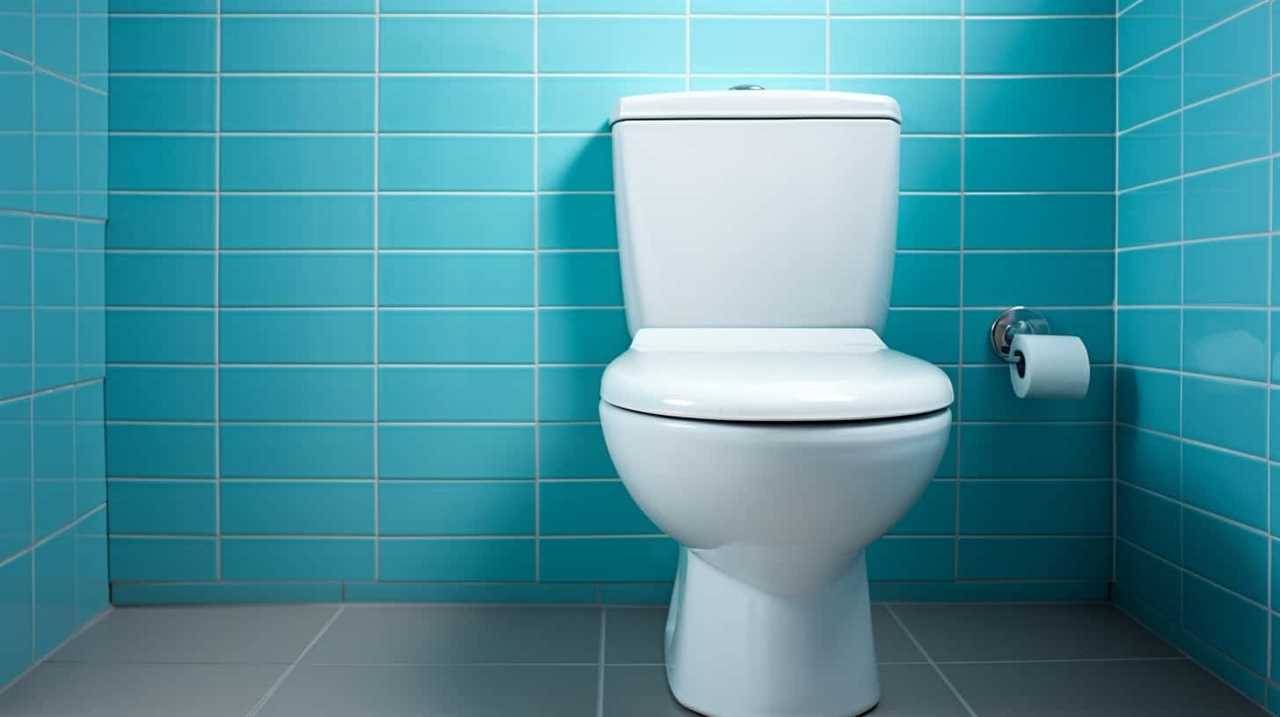
Alternative Methods of Food Disposal
To address the issue of food waste disposal, we can explore alternative methods that prioritize sustainability and minimize environmental impact. Here are three effective methods:
- Composting: This process involves decomposing organic materials, such as leftover food, into nutrient-rich compost. Composting not only reduces the amount of food waste in landfills but also produces a valuable resource that can enrich soil and support plant growth.
- Waste management: Implementing efficient waste management systems can help divert food waste from landfills. This can include initiatives like separate collection and recycling programs, where food waste is collected and processed separately to produce biogas or organic fertilizers.
- Food donation: Instead of disposing of excess food, donating it to local food banks or charities can help reduce waste while providing meals for those in need. This method not only benefits the environment but also contributes to social welfare.
Conclusion and Final Thoughts
In our final analysis, it is imperative that we consider more sustainable methods of food disposal. While flushing leftover food down the toilet may seem convenient, it is not a viable long-term solution. Instead, we should explore alternative solutions that are both environmentally friendly and culturally acceptable.
Here is a table outlining some alternative methods of food disposal and their benefits:
| Alternative Solutions | Benefits |
|---|---|
| Composting | – Reduces food waste in landfills |
- Creates nutrient-rich soil for gardening |
| Food recycling | – Converts food waste into renewable energy - Reduces greenhouse gas emissions |
| Food donation | – Helps address food insecurity - Reduces food waste |
Frequently Asked Questions
Can Flushing Leftover Food Down the Toilet Lead to Clogging or Blockages in the Plumbing System?
Flushing leftover food down the toilet can potentially cause plumbing issues such as clogging or blockages. It is important to consider the environmental impact as well.
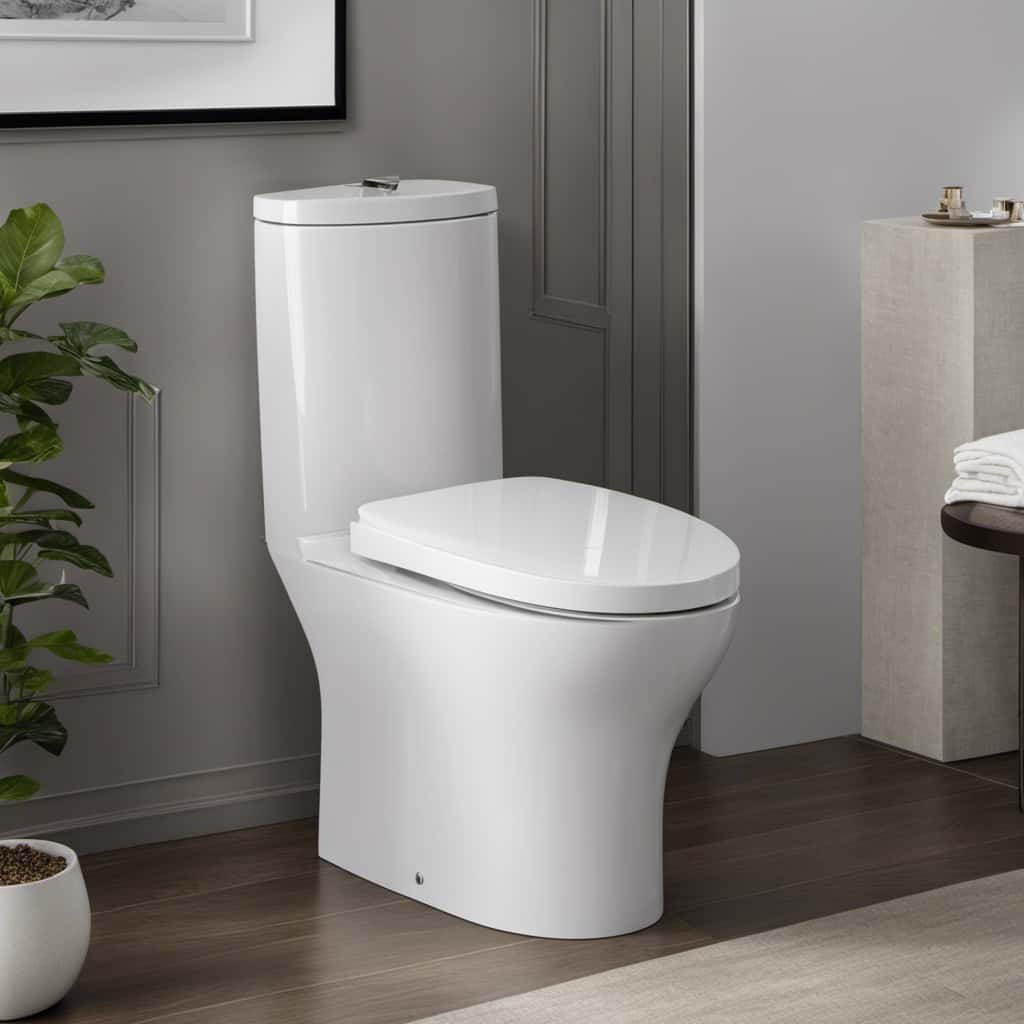
Are There Any Specific Types of Food That Should Never Be Flushed Down the Toilet?
There are specific types of food that should never be flushed down the toilet. Instead, we should consider food disposal alternatives to avoid potential clogging or blockages in the plumbing system and minimize the environmental impact.
Can Flushing Leftover Food Down the Toilet Attract Pests or Insects?
Flushing leftover food down the toilet may seem convenient, but it can attract pests and insects, causing health hazards. Additionally, it has negative environmental impacts, like clogging sewage systems. It’s best to dispose of food waste properly.
Is There a Risk of Contaminating Water Sources by Flushing Leftover Food Down the Toilet?
There is a risk of water contamination when flushing leftover food down the toilet. This can have a negative environmental impact as it can introduce harmful substances into water sources.
Are There Any Potential Legal Consequences for Flushing Leftover Food Down the Toilet?
There may be potential legal consequences for flushing leftover food down the toilet. Additionally, this action can have a negative environmental impact, as it can contribute to clogged pipes and strain wastewater treatment systems.
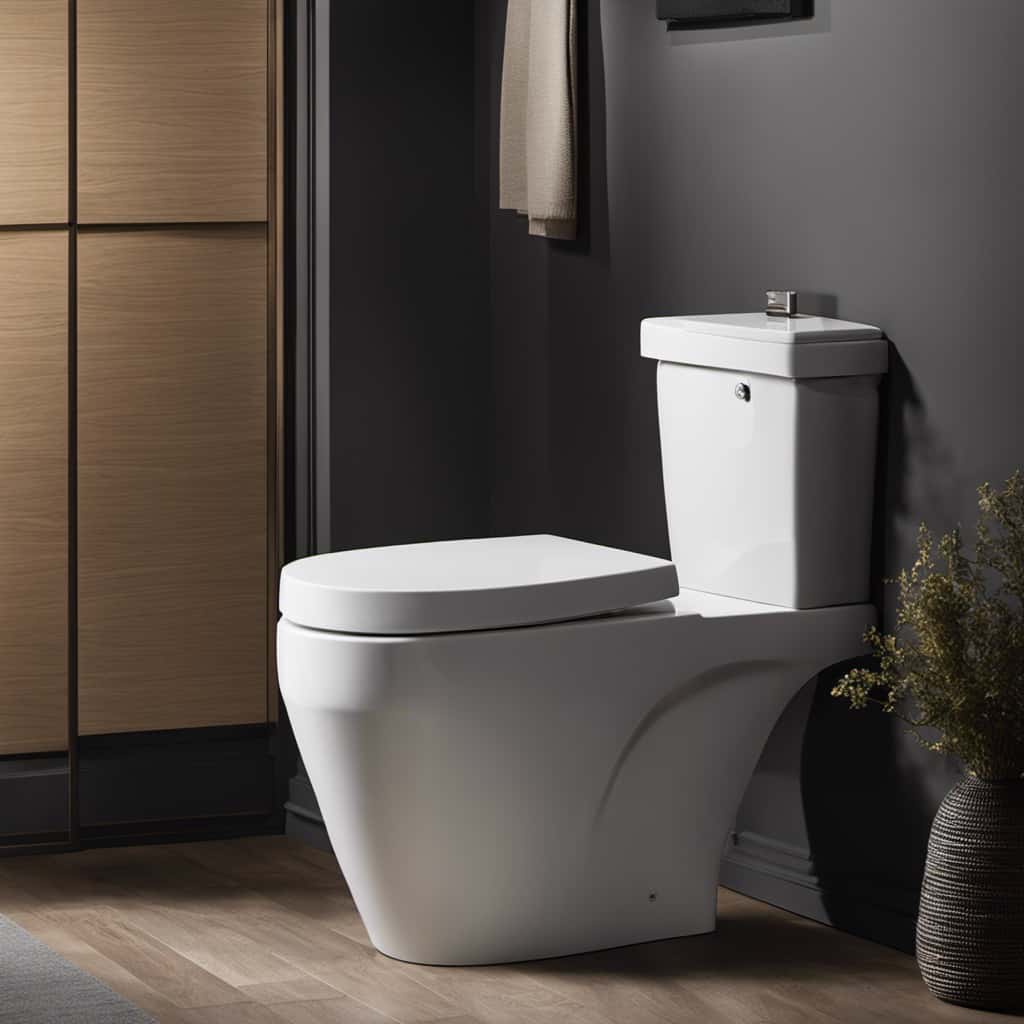
Conclusion
In conclusion, it isn’t advisable to flush leftover food down the toilet. This practice can have negative environmental impacts, cause plumbing and septic system issues, and pose health and safety concerns.
Instead, it’s recommended to explore alternative methods of food disposal, such as composting or using a garbage disposal. By doing so, we can help protect our environment, maintain the functionality of our plumbing systems, and ensure the safety and well-being of ourselves and others.

